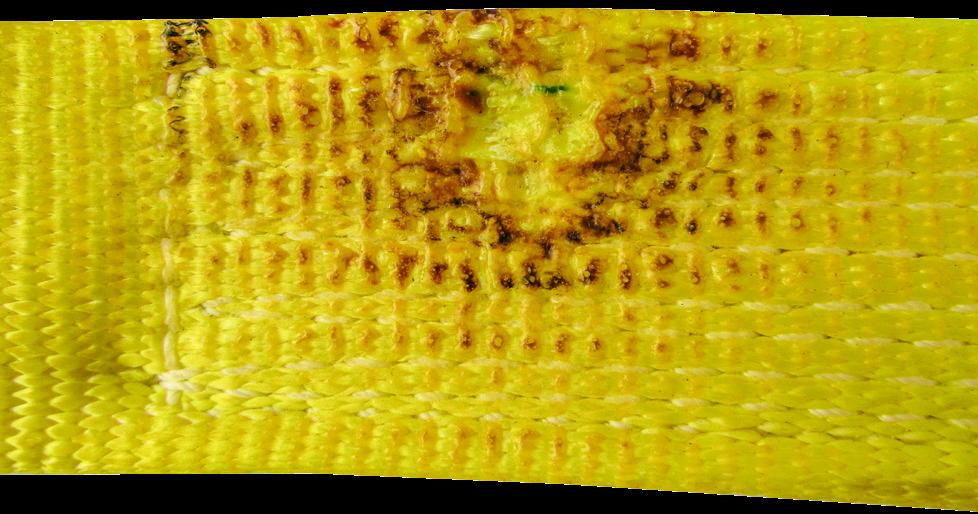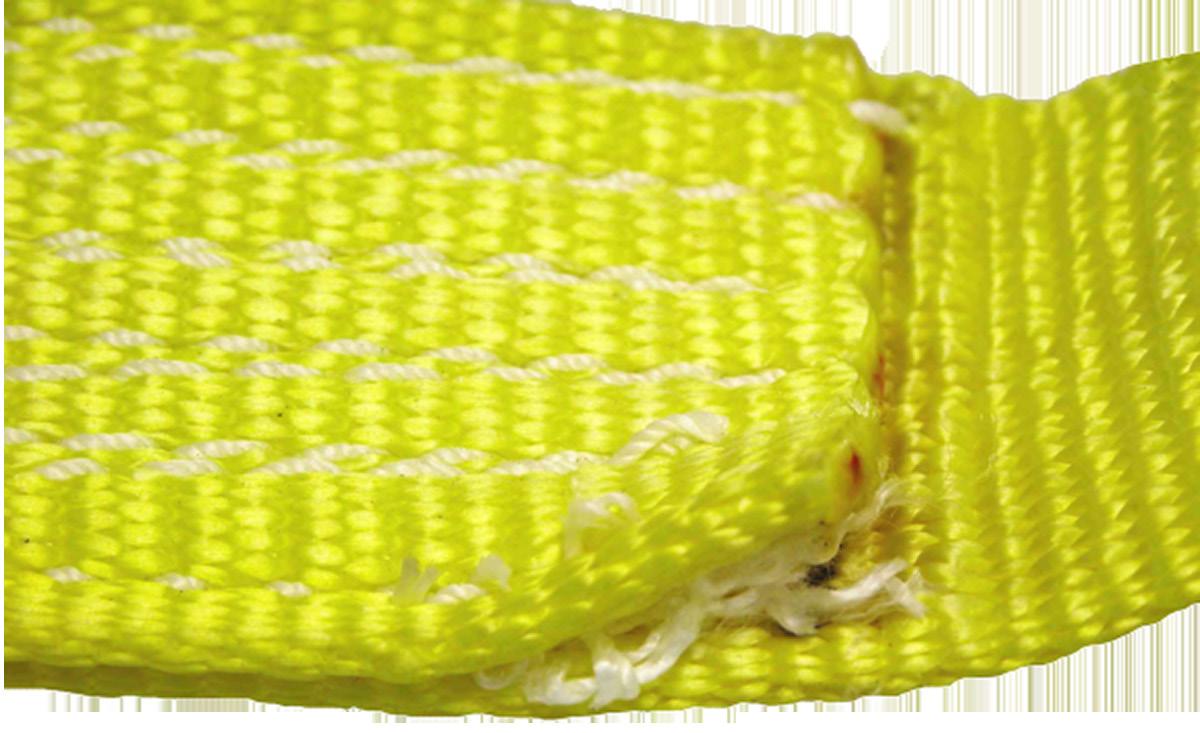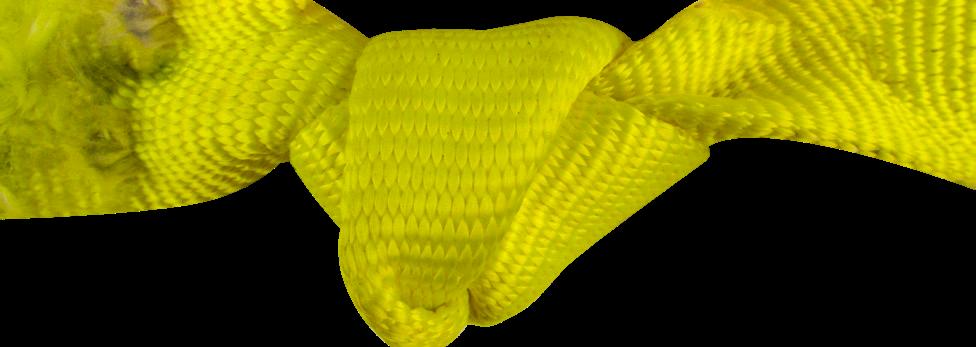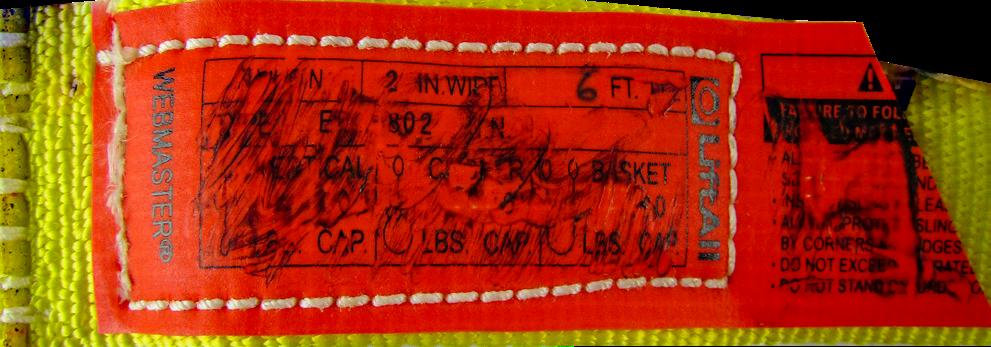
1 minute read
Inspection Criteria
from 2024 Catalog
by Lift-All
Inspection Criteria For Web Slings
HEAT / CHEMICAL
Advertisement
WHAT TO LOOK FOR: Melted or charred fibers anywhere along the sling. Heat and chemical damage can look similar and they both have the effect of damaging sling fibers and compromising the sling's strength. Look for discoloration and/or fibers that have been fused together and often feel hard or crunchy.
TO PREVENT: Never use nylon or polyester slings where they can be exposed to temperatures in excess of 200°F. Never use nylon or polyester slings in or around chemicals without confirming that the sling material is compatible with the chemicals being used.
BROKEN / WORN STITCHING
WHAT TO LOOK FOR: Loose or broken threads in the main stitch patterns. The stitch patterns in web slings have been engineered to produce the most strength out of the webbing. If the stitching is not fully intact, the strength of the sling may be affected.
TO PREVENT: Never pull slings from beneath loads where stitch patterns can get hung up or snagged. Never overload the slings or allow the load edge to directly contact the stitch pattern while lifting. Never place a sling eye over a hook or other attachment whose width/diameter exceeds 1/3 of the eye length.

Knots

WHAT TO LOOK FOR: Knots are rather obvious problems as shown below. Knots compromise the strength of slings by not allowing all fibers to contribute to the lift as designed. Knots may reduce sling strength by up to 50%.
TO PREVENT: Never tie knots in slings and never use slings that are knotted.
Illegible Or Missing Tags

WHAT TO LOOK FOR: If you cannot find or read all of the information on a sling tag, OSHA requires that the sling shall be taken out of service.
TO PREVENT: Never set loads down on top of slings or pull sling from beneath loads if there is any resistance. Load edges should never contact sling tags during the lift. Avoid paint or chemical contact with tags.
Red Core Yarns are an additional aid to warn of dangerous sling damage. All standard Lift-All Web Slings have this warning feature. The red core yarns become exposed when the sling surface is cut or worn through the woven face yarns. When red yarns are visible, the sling should be removed from service immediately. For other inspection criteria see OSHA/Manufacturer regulations in the General Information section of this catalog and the safety bulletin provided with each sling.










